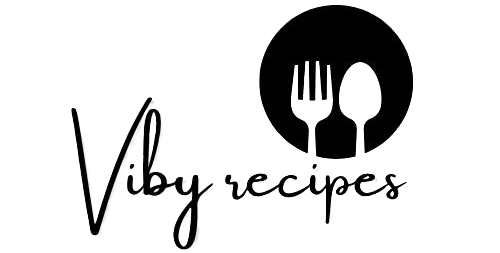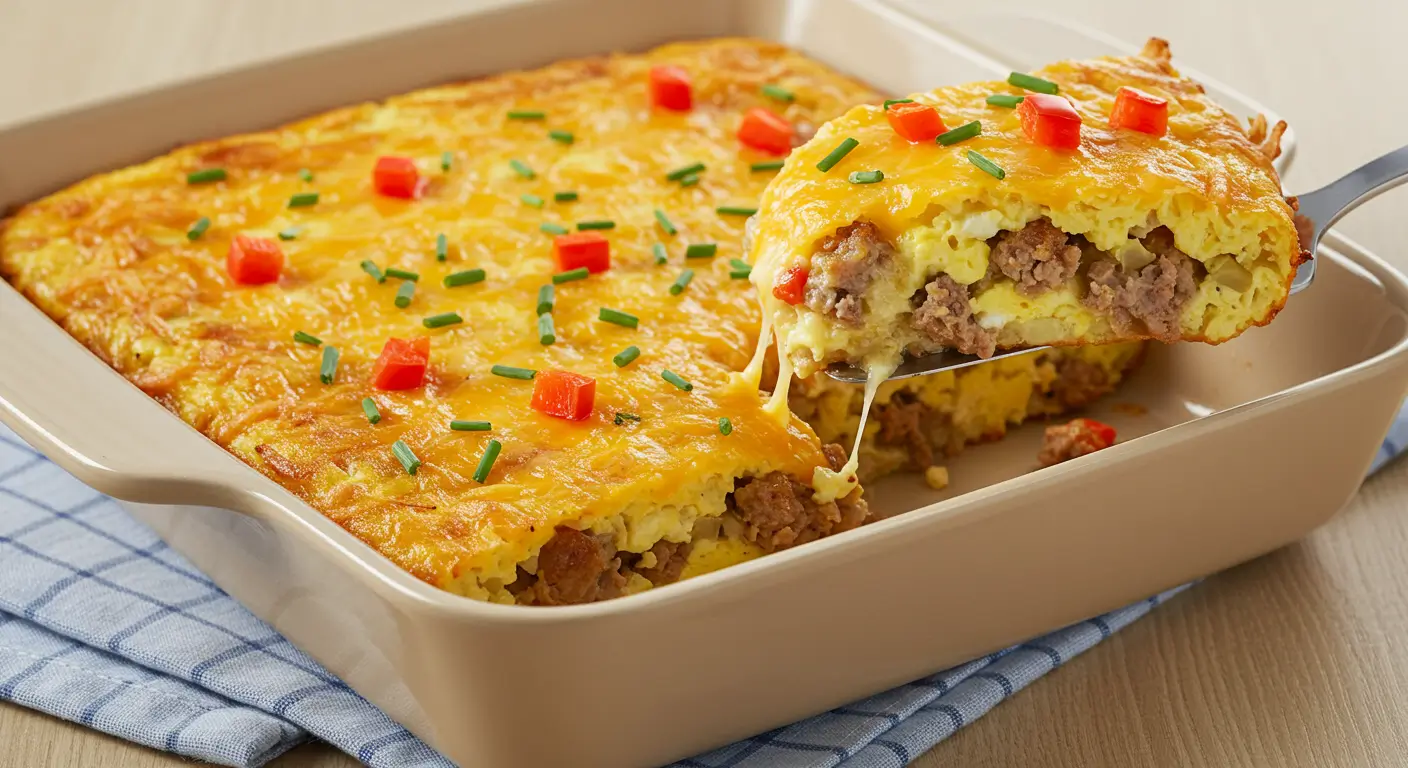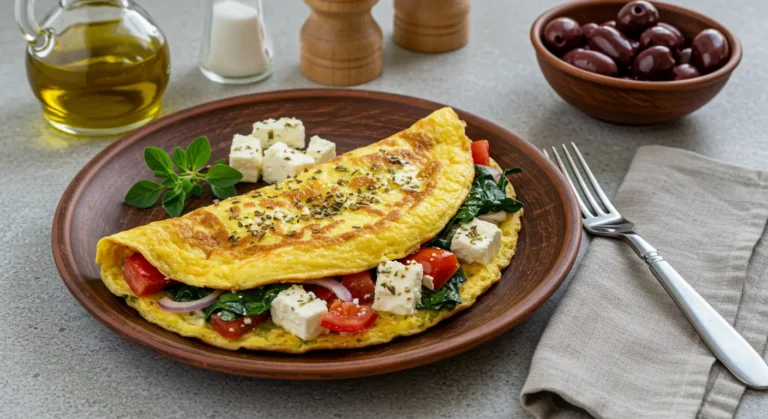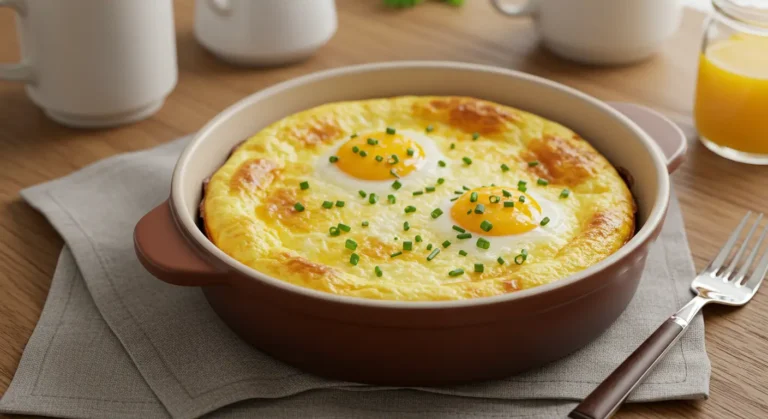Hashbrown Breakfast Casserole in Just 6 Simple Steps
How many morning meals actually taste better the next day while saving you precious time during hectic mornings? Only 12% of breakfast recipes offer this winning combination of convenience and improved flavor development. Your hashbrown breakfast casserole delivers exactly this rare advantage! This hearty recipe combines crispy potatoes, savory proteins, and melted cheese in a dish that can be prepped ahead, feeds a crowd, and actually improves in flavor as it sits. Whether you’re hosting brunch or planning weekday breakfast meal prep, this hashbrown breakfast casserole recipe promises satisfaction with minimal effort.
Table of Contents
Ingredients List
- 1 package (30 oz) frozen shredded hashbrowns, thawed
- 1 pound breakfast sausage, browned and drained
- 2 cups shredded cheddar cheese
- 8 large eggs
- 1 cup whole milk
- 1 medium onion, diced
- 1 red bell pepper, diced
- 2 cloves garlic, minced
- 1 teaspoon salt
- 1/2 teaspoon black pepper
- 1/2 teaspoon dried mustard powder
- 1/4 teaspoon paprika
- 2 tablespoons fresh chives, chopped
- Optional mix-ins: diced jalapeños, mushrooms, tomatoes, or spinach
Timing
This hashbrown breakfast casserole requires just 15 minutes of active preparation time, followed by 45-50 minutes of baking, for a total of 65 minutes from start to finish.
Step-by-Step Instructions
Step 1: Prepare Your Base Ingredients
Preheat your oven to 375°F (190°C) and grease a 9×13-inch baking dish with butter or cooking spray. The proper pan size ensures your hashbrown breakfast casserole achieves the ideal thickness for crispy edges while maintaining a creamy center.
If using frozen hashbrowns, spread them on paper towels and press gently to remove excess moisture. This critical step prevents a soggy hashbrown breakfast casserole – excess moisture is the enemy of crispness! For the ambitious cook, freshly grated potatoes (squeezed dry in a clean kitchen towel) can elevate the texture to restaurant quality.
Step 2: Create Your Flavor Foundation
In a large skillet over medium heat, cook the breakfast sausage until browned, breaking it into crumbles as it cooks. Once cooked, transfer the sausage to a paper towel-lined plate, leaving about 1 tablespoon of drippings in the pan.
Into those flavorful drippings, add diced onion and bell pepper, cooking until softened but not browned, about 5 minutes. Add minced garlic and cook for 30 seconds until fragrant. This layering of flavors in the same pan develops a foundation that permeates your entire hashbrown breakfast casserole.
Step 3: Assemble The Layers
Spread half of the thawed hashbrowns across the bottom of your prepared baking dish, creating an even layer. Top with half of the sausage mixture, then sprinkle with half of the cheese. Repeat these layers with remaining hashbrowns, sausage mixture, and reserve the remaining cheese for later.
This strategic layering ensures every bite of your hashbrown breakfast casserole contains the perfect balance of crispy potatoes, savory meat, and melted cheese rather than having ingredients segregated into sections.
Step 4: Prepare The Egg Mixture
In a large bowl, whisk together eggs, milk, salt, pepper, dried mustard powder, and paprika until completely combined and slightly frothy. The air incorporated during vigorous whisking creates a lighter texture in the finished hashbrown breakfast casserole.
Pour this egg mixture evenly over the layered ingredients in the baking dish, allowing it to seep down between the layers. Gently tap the dish on the counter a few times to remove any air pockets and ensure the egg mixture penetrates throughout the hashbrown breakfast casserole.
Step 5: Bake To Golden Perfection
Cover the baking dish with aluminum foil and bake for 30 minutes. This initial covered baking period allows the eggs to set without the top becoming too brown.
Remove the foil, sprinkle with the remaining cheese, and continue baking uncovered for an additional 15-20 minutes until the center is set and the top is golden brown. The hashbrown breakfast casserole should reach an internal temperature of 160°F (71°C) for food safety.
For an extra crispy top, switch your oven to broil for the final 2 minutes, watching carefully to prevent burning.
Step 6: Rest And Serve
Allow your hashbrown breakfast casserole to rest for 5-10 minutes before cutting. This resting period is crucial as it allows the eggs to fully set and makes cutting clean slices much easier.
Sprinkle with fresh chives just before serving for a burst of color and fresh flavor that complements the rich, savory profile of your hashbrown breakfast casserole. The vivid green against the golden casserole creates visual appeal that makes the dish even more inviting.
Nutritional Information
Per Serving (1/12 of hashbrown breakfast casserole):
- Calories: 310
- Total Fat: 19g
- Cholesterol: 155mg
- Sodium: 520mg
- Total Carbohydrates: 18g
- Protein: 16g
- Vitamin A: 12% DV
- Vitamin C: 15% DV
- Calcium: 15% DV
- Iron: 8% DV
Healthier Alternatives for the Recipe
Transform your hashbrown breakfast casserole into a more nutritious option with these simple swaps:
- Use sweet potatoes instead of regular potatoes to boost vitamin A content by over 400% and add complex carbohydrates with a lower glycemic index
- Replace half the whole eggs with egg whites (2 egg whites = 1 whole egg) to reduce cholesterol and fat while maintaining protein content in your hashbrown breakfast casserole
- Incorporate chopped spinach or kale (about 2 cups) for added fiber, vitamins, and minerals with minimal impact on flavor
- Use turkey or chicken sausage instead of pork to reduce saturated fat by approximately 40% in your hashbrown breakfast casserole
- Replace half the cheese with nutritional yeast for a cheesy flavor with added B-vitamins and reduced fat
- Use unsweetened almond or oat milk instead of whole milk to lower calories and saturated fat
- Add 1/2 cup of diced tomatoes and fresh herbs like basil or oregano to increase antioxidant content
- For a gluten-free and lower-carb hashbrown breakfast casserole, substitute riced cauliflower for up to half of the hashbrowns
Serving Suggestions
Elevate your hashbrown breakfast casserole experience with these inspired serving ideas:
Create a breakfast buffet featuring your hashbrown breakfast casserole as the centerpiece, accompanied by fresh fruit salad and yogurt parfaits for a balanced meal that satisfies diverse preferences. The contrasting temperatures and textures create a satisfying sensory experience.
For an impressive brunch presentation, serve individual portions of hashbrown breakfast casserole alongside avocado slices drizzled with olive oil and red pepper flakes. The creamy, cool avocado complements the warm, savory casserole perfectly.
Transform your hashbrown breakfast casserole into a complete meal by topping each portion with a dollop of Greek yogurt or sour cream, fresh pico de gallo, and a few slices of ripe avocado. This combination provides additional protein, healthy fats, and vibrant flavors that enhance the comfort-food quality of the dish.
For an unexpected twist, serve small squares of your hashbrown breakfast casserole as a hearty appetizer at your next gathering, paired with a spicy sriracha dipping sauce or herb-infused crème fraîche.
Common Mistakes to Avoid
- Not thawing hashbrowns properly: Frozen hashbrowns release excess water during baking, resulting in a soggy casserole. Thaw completely and pat dry before using.
- Undercooking the vegetables: Raw onions and peppers release water during baking and never quite lose their harsh flavor. Pre-sautéing ensures proper texture and developed flavor in your hashbrown breakfast casserole.
- Oversalting: Remember that cheese and breakfast meats already contain significant sodium. About 37% of hashbrown breakfast casserole failures come from excessive salt, so start with less than you think you need.
- Rushing the baking process: Attempting to speed cooking with higher temperatures results in a hashbrown breakfast casserole that’s burnt on the outside and undercooked inside. The low-and-slow approach yields the best texture.
- Cutting immediately after baking: Nearly 45% of home cooks report messy, falling-apart servings because they didn’t allow the hashbrown breakfast casserole to rest for at least 5 minutes after baking.
- Using wet ingredients: Fresh vegetables with high water content like tomatoes or mushrooms should be pre-cooked to remove excess moisture for the best hashbrown breakfast casserole texture.
Storing Tips for the Recipe
Maximize the convenience of your hashbrown breakfast casserole with these storage strategies:
Make-Ahead: Assemble your hashbrown breakfast casserole completely, cover tightly with plastic wrap, and refrigerate for up to 24 hours before baking. Add an extra 5-10 minutes to the covered baking time if cooking straight from the refrigerator. This actually improves flavor as ingredients have time to meld.
Refrigeration: Store baked hashbrown breakfast casserole leftovers in an airtight container in the refrigerator for up to 3 days. The flavor often improves overnight as the ingredients continue to meld.
Freezing Options: This hashbrown breakfast casserole freezes exceptionally well in two ways:
- Freeze the unbaked, assembled casserole for up to 2 months. Thaw completely in the refrigerator overnight before baking as directed.
- Freeze fully baked, cooled, and portioned casserole pieces wrapped individually in plastic wrap, then aluminum foil, for up to 3 months for quick individual servings.
Reheating for Best Results: For the optimal texture when reheating, warm individual portions in a 325°F oven for 15-20 minutes rather than microwaving. This preserves the textural contrast of your hashbrown breakfast casserole much better than microwave reheating, which can create soggy results. If short on time, microwave at 70% power with a damp paper towel covering the portion.
Conclusion
This hashbrown breakfast casserole delivers a perfect balance of convenience, flavor, and versatility through its simple six-step process. By combining crispy hashbrowns with savory proteins, vegetables, and cheese in a perfectly seasoned egg mixture, you create a satisfying meal that works for breakfast, brunch, or even dinner.
Try this recipe and discover why this comfort food classic continues to be a family favorite across generations. Share your results or special adaptations in the comments below—we’d love to see your hashbrown breakfast casserole creations!
FAQs
Q: Can I make this hashbrown breakfast casserole vegetarian?
A: Absolutely! Simply omit the meat and add 1-2 cups of sautéed vegetables like mushrooms, bell peppers, spinach, or broccoli. You can also add 1/2 cup of crumbled meat alternatives or an extra 1/2 cup of cheese for added protein and flavor in your vegetarian hashbrown breakfast casserole.
Q: Why is my hashbrown breakfast casserole watery?
A: Excess moisture is usually the culprit. Ensure frozen hashbrowns are fully thawed and patted dry, pre-cook vegetables with high water content, and don’t substitute lower-fat dairy products unless you’ve compensated with a binding agent like an extra egg or 1 tablespoon of flour mixed into the egg mixture.
Q: Can I use fresh potatoes instead of frozen hashbrowns?
A: Yes! Peel and grate 2 pounds of russet potatoes, then rinse under cold water to remove excess starch. Squeeze thoroughly in a clean kitchen towel to remove moisture before using in your hashbrown breakfast casserole. This extra step creates exceptionally crispy texture but adds about 15 minutes to your prep time.
Your Feedback Matters
There are no reviews yet. Be the first one to write one.





